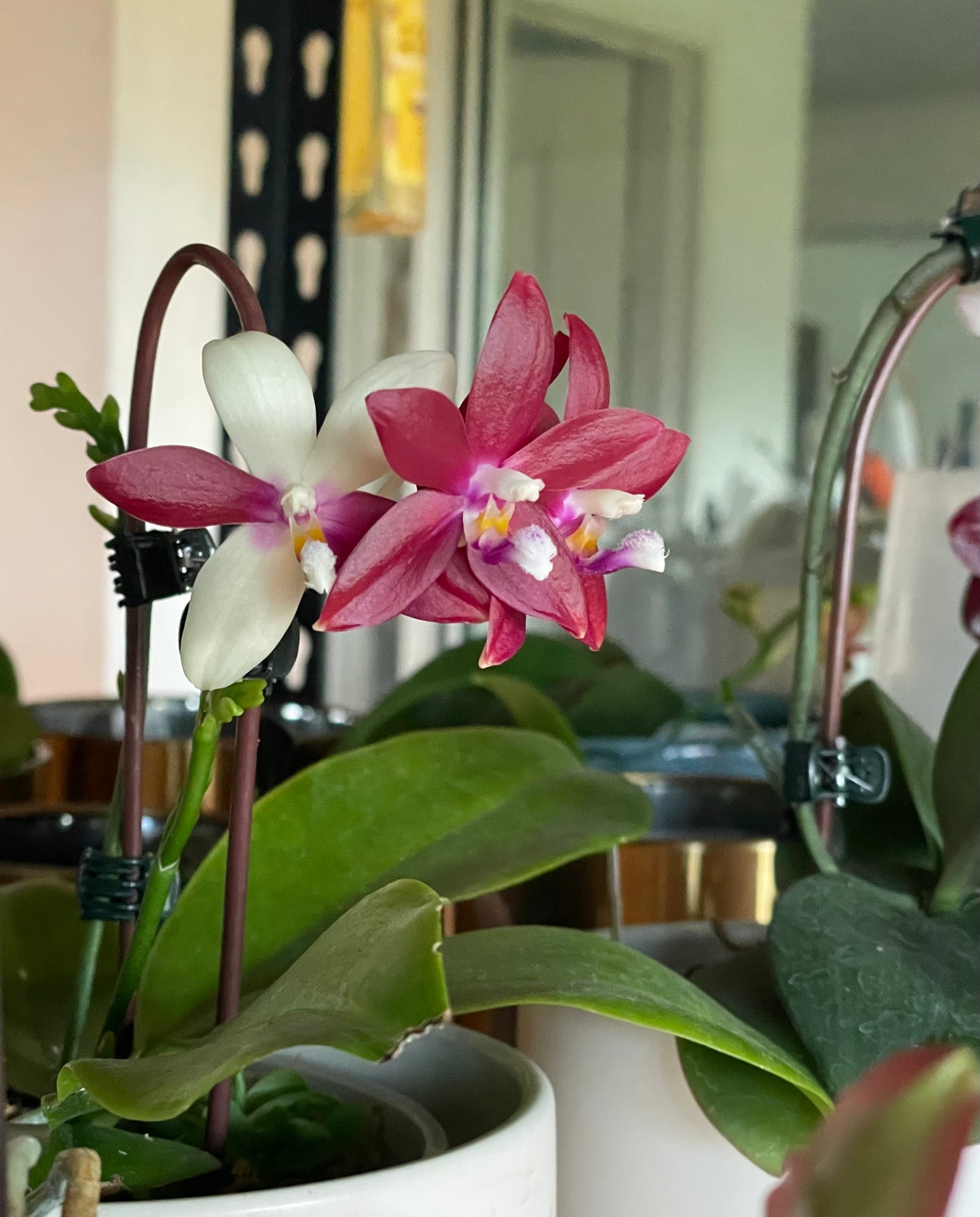Care guide for orchids
Firstly, some signs to look for:
Healthy Orchids - green tips on roots/ firm leaf growth/ additional root/stem proliferation.
Unhealthy Orchids - saggy leaves/ black and/or yellow colouring around stem/ stalling or lack of additional growth.
Secondly, a few topics of care to note:

Condition 1
Air Flow / Circulation
My number one point to remember for phalaenopsis orchids is the ability to breathe within the available circulating air. Many orchids stall when air flow is suboptimal. This related to both the leaves and the roots. When air is not considered the leaves or roots are clogged in water or media and susceptible to infection and deterioration.
Whilst you should note that these plants are epiphytic and require airy environments, this does not necessarily mean your home environment is built to grow orchids in a similar manner. Your home may lack humidity required so a moderation approach is best.
Therefore, you should be humidifying the air directly surrounding the orchid much how your nose and throat conditions the air you breathe.
Pro Tip: Consider empty space to be one type of media you should include when repotting an orchid in order to create airy spaces in the pot.

Condition 2
Watering - How and when
You never know what is the right answer when you're reading multiple care tips from multiple sources on the web. However, this may be the most susceptible condition to alter depending on changes of the other conditions.
Firstly, you can water an orchid however you like, from top or bottom, with fertiliser, etc but you should consider the following factors:
- Air circulation (how fast water evaporates)
- Chosen media (how much water is absorbed)
- Risk of exposure to bacteria, fungi and viruses.
I elect to water my orchids from the bottom to reduced the water exposure and water sharing on and within the orchid leaves. This helps me reduce the proliferation of the above issues and keeps the leaves spotless. It's also the laziest which works for me. Once a week, I simply pop the orchid with its pot in a 5cm bath of water for 5 mins, allowing to soak up water, and sliding it back to its airy position.
Pro Tip: Consider double potting or inverse potting to provide more humidity to your orchid. A clear empty pot on top, covering your orchid, can provide a good level of humidity without the need to organise more serious applications.

Condition 3
Chosen Media
Be mindful and selective about the media you choose. The media you choose can have direct implications on your orchid's health. Unfortunately, this means you may have to be more tedious in this department.
Popular choices which you should develop a mix from:
- Orchid bark (good structure but not airy)
- Sphagnum moss (absorbant but degrads fast)
- Perlite (airy but not absorbant)
Feel free to trial different mixes to suit your environment but preferably, for a normal phalaenopsis, you should aim to water once a week and have it bone dry by the next watering.
Pro Tip: Don't fill the pot the whole way up. Be ok allowing roots, especially air roots to direct themselves wherever they elect. Some Phalaenopsis orchids do like to stay quite dry (but not all).
The Care Guide for Phalaenopsis Orchids
Buying an orchid? or received one? you may ask how do i care for an orchid? I'm hoping this care guide can give you a breakdown for the care requirements for Phalaenopsis orchids. Learn about information attaining to conditions like watering, sunlight, media.
